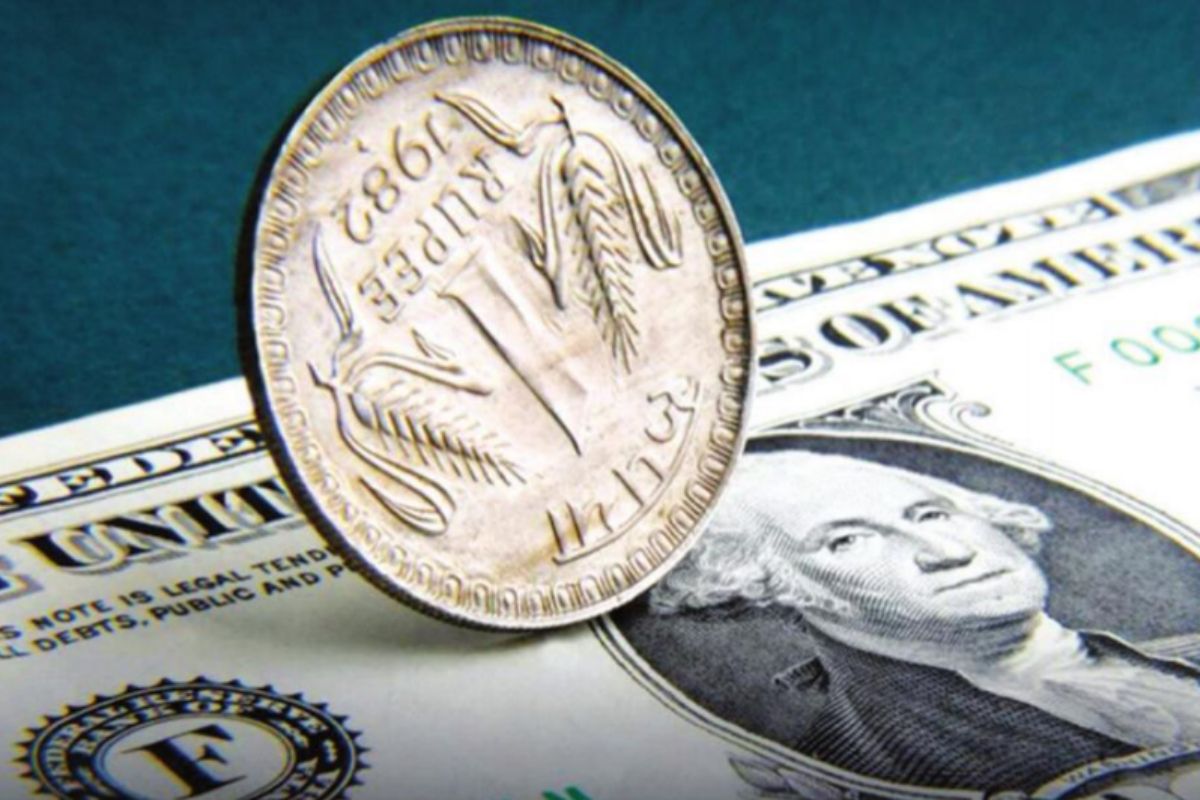Market ends flat in rangebound session amid tariffs concern
At close, the Sensex was down 7.51 points or 0.01% at 74,332.58, and the Nifty was up 7.80 points or 0.03% at 22,552.50. For the week, BSE Sensex added 1.5% and Nifty jumped 2%.
Continuing with the consistent depreciation, the rupee slipped further from the recent low and hit another lifetime low at 81.90 against the US dollar on Wednesday morning. In equity markets, Indian stocks extended their losses for the sixth straight session, dragged largely by broad-based selling in the global equities. At 10.08 am, Sensex and Nifty each traded 0.3-0.4 per cent lower.

Rupee depreciates to new lifetime low; stocks decline for sixth day
Continuing with the consistent depreciation, the rupee slipped further from the recent low and hit another lifetime low on Wednesday morning. This consistent depreciation follows the ongoing strengthening of the US dollar index for a two-decade high, on hopes that demand for safe-haven currency such as the dollar would pick up.
The rising trade deficit, depleting forex reserves, and the latest monetary policy tightening by the US Federal Reserve too triggered the depreciation of the currency. On Wednesday, it touched a low of 81.90 against the US dollar, as against the previous day’s closing at 81.70.
Advertisement
For the record, the US Federal Reserve had raised the repo rate by 75 basis points — which is the third consecutive hike of the same magnitude, in line with expectations, which essentially means that investors will move towards the US markets for better and stable returns amid the monetary policy tightening. The Fed also hinted that more rate hikes were coming and that these rates would stay elevated until 2024.
Advertisement
The US central bank seeks to achieve maximum employment and inflation at the rate of 2 per cent over the long run and it anticipates that the ongoing hikes in the target range will be appropriate. Raising interest rates is a monetary policy instrument that typically helps suppress demand in the economy, thereby helping the inflation rate decline.
However, consumer inflation in the US declined marginally in August to 8.3 per cent from 8.5 per cent in July but is way above the 2 per cent goal.
Meanwhile, India’s forex reserves are at a two-year low. The reserves have dropped by almost USD 80 billion since the escalation of the Russia-Ukraine tensions into war earlier this year.
India’s forex reserves have been consistently depleting for the past few months because of RBI’s likely intervention in the market to defend the depreciating rupee and for the country’s trade settlement. This depletion is yet another possible reason the rupee has been weakening.
Typically, the RBI intervenes in the market through liquidity management, including through the selling of dollars, with a view to preventing a steep depreciation in the rupee. A depreciation in the rupee typically makes imported items costlier.
For fresh cues, investors await RBI’s upcoming monetary policy outcome – many expect another repo rate hike, though the magnitude of the rise will be closely watched. The next three-day monetary policy meeting commences today.
In equity markets, Indian stocks extended their losses for the sixth straight session, dragged largely by broad-based selling in the global equities.
At 10.08 am, Sensex and Nifty each traded 0.3-0.4 per cent lower.
Advertisement